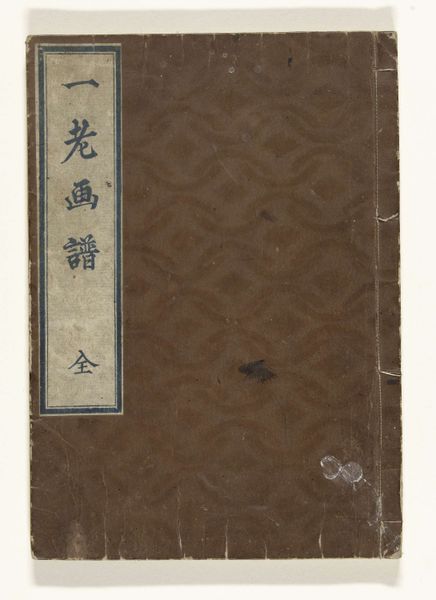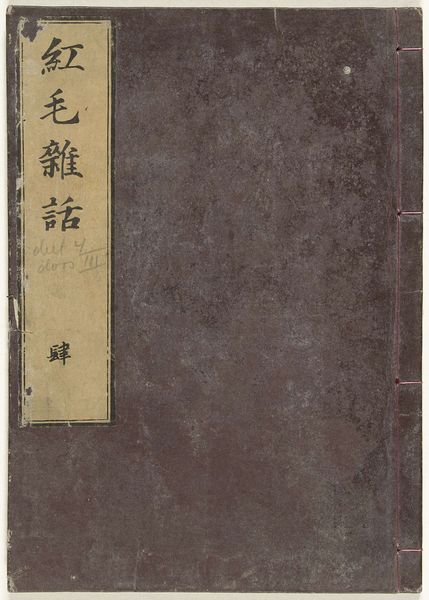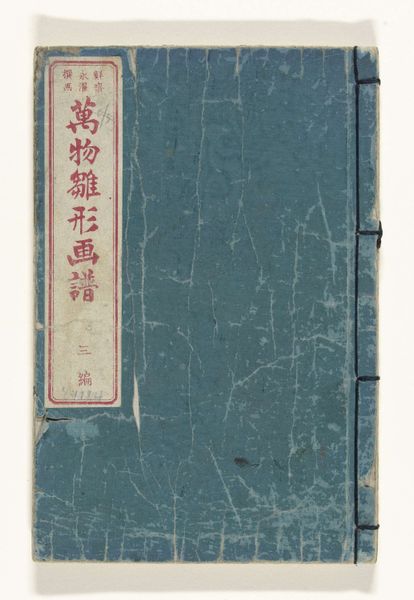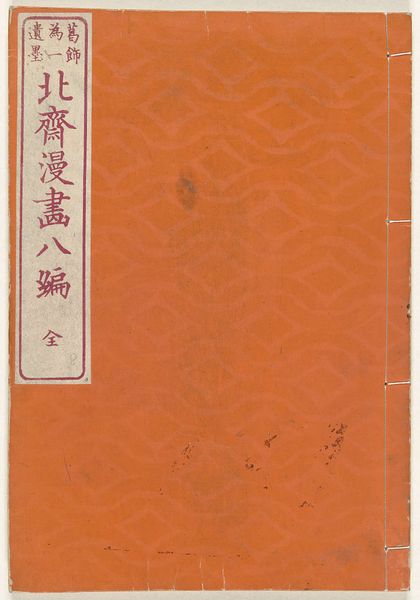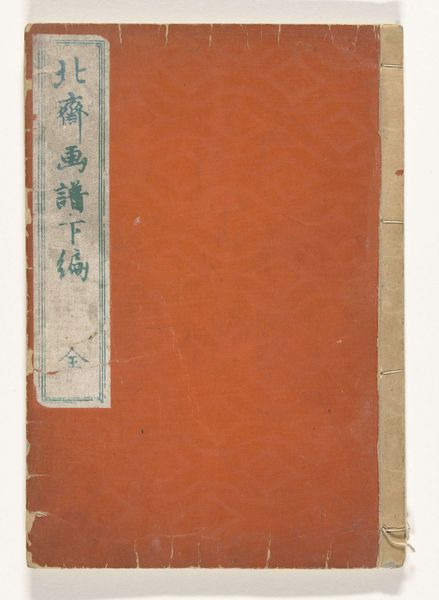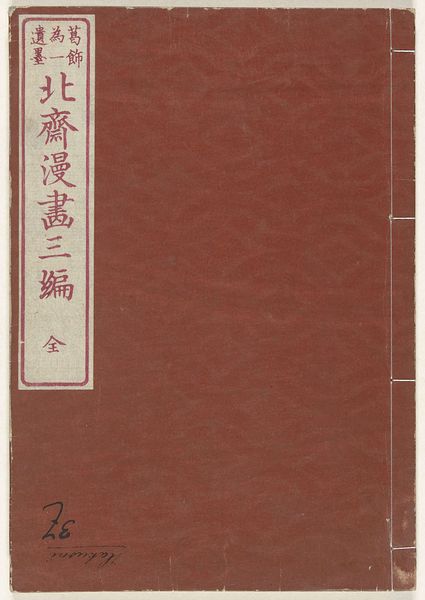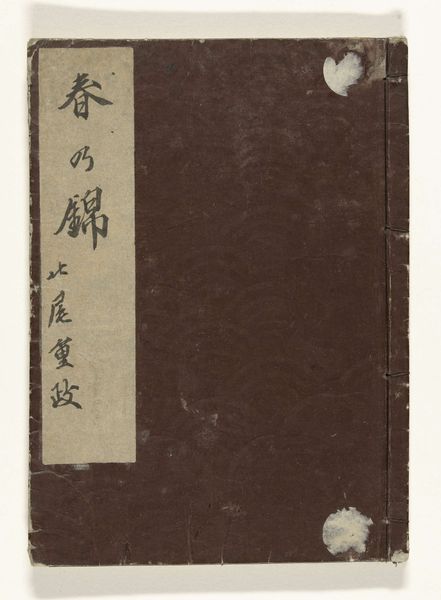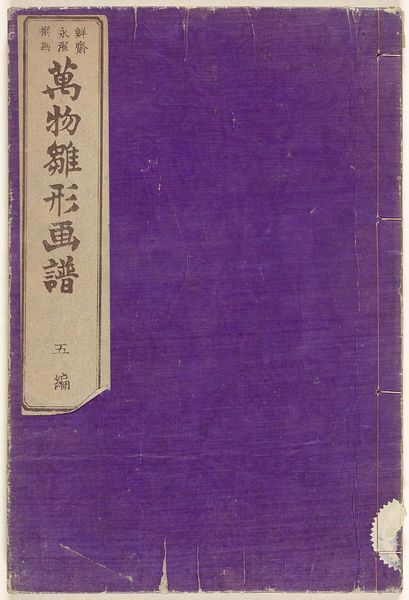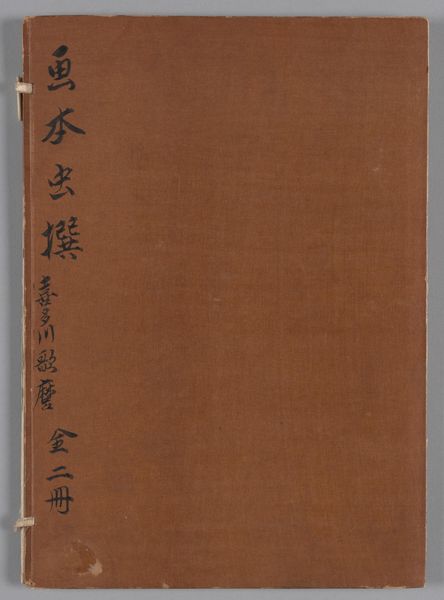
Dimensions: height 225 mm, width 159 mm
Copyright: Rijks Museum: Open Domain
Curator: Welcome! We’re looking at a volume titled "Reisalbum van Hokusai," created between 1865 and 1875 by Totoya Hokkei. It’s held here at the Rijksmuseum. Editor: My immediate impression is one of contained energy. Even though it’s “just” the cover of a travel album, that burnt orange hue vibrates. The repeating wave pattern underneath feels almost restless, as if hinting at the landscapes hidden within. Curator: That resonates with the context. Travel albums like these, utilizing woodblock printing and ink on paper, became quite popular as Japonisme swept through the West, influencing everything from design to fine art. These prints offered a readily available, accessible way to engage with Japanese aesthetics. Editor: Precisely. But what does "accessibility" mean? Were these images catering to colonial desires for exoticism, perpetuating power dynamics by turning foreign cultures into consumable goods? It's impossible to ignore the political backdrop, especially during a period marked by unequal treaties and Western expansion into Asia. Curator: That's a crucial point. But, to clarify, Hokusai had passed by the time this album was created, so it wasn’t created as he planned. The role of Japanese artists like Hokkei in adapting styles initially popularized by Hokusai becomes really important here. These albums were produced for export, aiming to capture that market driven by figures such as the famous ukiyo-e printmaker himself, Hokusai. Hokkei makes landscape imagery that can tap into this growing interest, helping to facilitate cross-cultural dialogues even within imbalanced power structures. Editor: I think of how the landscape, as a genre, often becomes a canvas for projecting cultural narratives. Even in ostensibly "neutral" depictions, the choices about what is included, how it is framed, speak volumes about the relationship between observer and observed. The wave pattern here could also be invoking ideas of constant change and even of unrest. I am still caught by this sense of cultural translation. Curator: Absolutely. In many ways the materiality itself reinforces this—woodblock prints mass produced but also inherently individual. Editor: Examining that tension—between individual artistry and mass consumption—allows us to address uncomfortable truths about the globalization of art, inviting us to reflect on what we consume and why. Curator: Thank you. These dialogues offer different means to contextualize artworks and enrich how we understand and perceive it, making a powerful point.
Comments
No comments
Be the first to comment and join the conversation on the ultimate creative platform.
